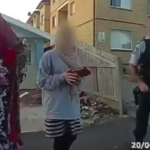Dumping and Punching: NSW Police Watchdog Investigates Brutality and Misconduct

In its Annual Report 2018-19, the Law Enforcement Conduct Commission (LECC) notes that over the last year it assessed 2,547 complaints about the NSW Police Force (NSWPF). However, due to a “challenging” budget, the oversight body was only able to fully investigate 2 percent of complaints.
The LECC began its operations on 1 July 2017. It was designed to replace and streamline the police oversight functions of the Police Integrity Commission, the police division of the NSW Ombudsman and the inspector of the NSW Crime Commission.
The sole NSW police watchdog has been plagued by a lack of funding since its inception. LECC chief commissioner Michael Adams told a parliamentary committee on oversight in March last year that with a continued lack of resources, the LECC can’t operate to the standard it should be.
But, despite its funding woes, the LECC managed to conduct 207 investigations over the financial year 2018-19. So, Sydney Criminal Lawyers decided to take a look at some of the questionable conduct that the oversight body caught NSW police officers engaging in.
The old drive ‘em out and dump ‘em trick
Most of us have heard anecdotes about police driving people to an out of the way area and dumping them there as a form of extrajudicial punishment. And just recently the LECC have documented an incident that reveals police still get up to this practice.
At around 9.40 pm on 2 April last year, two police officers were patrolling Burwood, when they noticed a man they knew to have an extensive criminal record – referred to as Mr G in the report – seated upon a styrofoam box out the front of a unit block on Railway Parade.
In his possession, Mr G had a number of baby formula cans and a pair of UGG boots. And on being questioned, G said he’d found the items in a bin. A subsequent search of the man turned up a bottle of fish oil capsules, a GPS and a Seak brand bag.
Noticeably intoxicated, Mr G began swearing at the officers, who warned him to stop using offensive language. But when G continued to abuse them, the officers threw him in the back of their caged vehicle.
At 9.57 pm that evening, a CCTV camera captured the police vehicle pulling up Dasea Road, which is a somewhat remote and uninhabited area of Chullora. The officers removed G from the back of the vehicle and placed him on the side of the road.
Just after they drove away, the officers turned the vehicle back in the direction of Mr G. They got out and dragged the man further off the roadside, so his legs were no longer on the actual road, and then drove off once again.
It’s common law practice, isn’t it?
As part of the investigation three officers gave testimony, two of which stated they believed there’s a common law power that allows police to arrest and remove someone from an area for breach of the peace. And one stated that it’s up to an officer’s discretion as to how far they’re taken.
The first officer said that it was his decision to leave Mr G in the area, as he knew no one would be there. He claimed G refused to exit the vehicle and went limp, so he had to be carried out. And as Mr G wouldn’t take his court attendance notice, the officer left it on the ground beside him.
The second officer recalled having taken people to that area and leaving them there in the past. On one such occasion he was directed to do so by the third officer who gave testimony. And he asserted there’s no requirement to give notice to anyone when leaving a local area command.
Removing people from an area was something the third officer had done on occasion. But, he said he’d never directed the other officers to do this. He thought what they did was reasonable, unless G was intoxicated. And he found the footage disturbing as the person didn’t appear to be moving.
The LECC found that both officers had endangered Mr G’s life, as leaving him in the proximity to where large transport vehicles regularly pass was a failure of their obligation to ensure his safety. And removing G “was without lawful excuse and was conduct which was serious misconduct”.
Punching a handcuffed detainee
On 15 September 2017, leading senior constable A and senior constable B attended a Sydney hotel where a woman, Ms Z, had been restrained by security guards, as she was causing a disturbance after being asked to leave the premises due to her heavily intoxicated state.
Ms Z yelled abuse at the attending officers as they arrived. And when they removed her to a more secluded area to stop her causing a disturbance at the hotel, she kicked officer B in the leg with enough force to cause pain and draw blood.
The offender was then placed in a van and taken to a police station, where she was charged and placed in a holding cell. After Ms Z urinated on the floor, the custody manager told officers to place her in another cell, which included a toilet, so she might be more comfortable.
CCTV footage shows three officers open the holding cell door and request handcuffed Ms Z to walk to the observation cell. However, she refuses and instead abuses them. Then Constable A attempts to move her, but when she doesn’t budge, he steps back, raises his right arm and moves back in.
The footage doesn’t capture the punch, as two other officers are standing in the way, but Ms Z’s head is seen to jolt rapidly to the right. Constable A later told the LECC he was acting in self-defence as the detainee had kicked him, although this act wasn’t captured by the footage.
Sharing with friends
Constable A also admitted that while the footage of the incident was being played in the station, he recorded it on his mobile phone, and then shared it with a Snapchat group comprised of other officers. When questioned further about this, he said he probably wasn’t authorised to do it.
“We just send footage to each other, not necessarily recorded footage of CCTV but just video footage of each other at work,” Constable A told the commission. “It’s just like morale team building. I don’t know how else to describe it.”
Constable A further stated that he shared the footage as it showed him being kicked in the stomach, even though this can’t be seen to happen during the clip.
A touch excessive
The LECC found that the arrest and detainment of Ms Z was done in compliance with police protocols. She’d assaulted two officers by the time she arrived at the station and therefore, police did not attempt to photograph, fingerprint or interview her at that moment.
However, according to the LECC, Constable A wouldn’t have believed the force he used when punching her was reasonable, despite his claims to the contrary. And it further found that no reasonable person would find punching a seated and handcuffed individual an appropriate use of force.
Whilst the LECC accepted Ms Z swung her leg attempting to kick Constable A, it didn’t believe a woman of her size and level of intoxication, who was handcuffed and seated, posed any threat, and nor did it accept that the police officer would have felt any apprehension of harm.
Rather, the commission found it was a closed fist punch designed as an act of retribution. The statutory body further classed it as an “unjustified act of violence”. And Constable A had engaged in the use of unreasonable force, which the LECC deemed to be serious misconduct.
And as for sharing the footage on Snapchat with his fellow officers, the commission found the police officer was definitely in breach of NSWPF policies and guidelines.
Police punish their own
As for the two officers who dumped the intoxicated man on the roadside and left him, the LECC recommended that they be given further training. This recommendation took into consideration that the pair had been withdrawn from full duty for some time and suffered financial detriment.
While as for Constable A, the commission recommended that the NSW police commissioner remove him from the force, and that the NSW Director of Public Prosecutions consider whether to prosecute him.
However, it must be remembered that the LECC recommendations are simply that: suggestions on actions that it believes should be taken. And the final decision on whether and how a police officer is to be disciplined is left up to the force.







